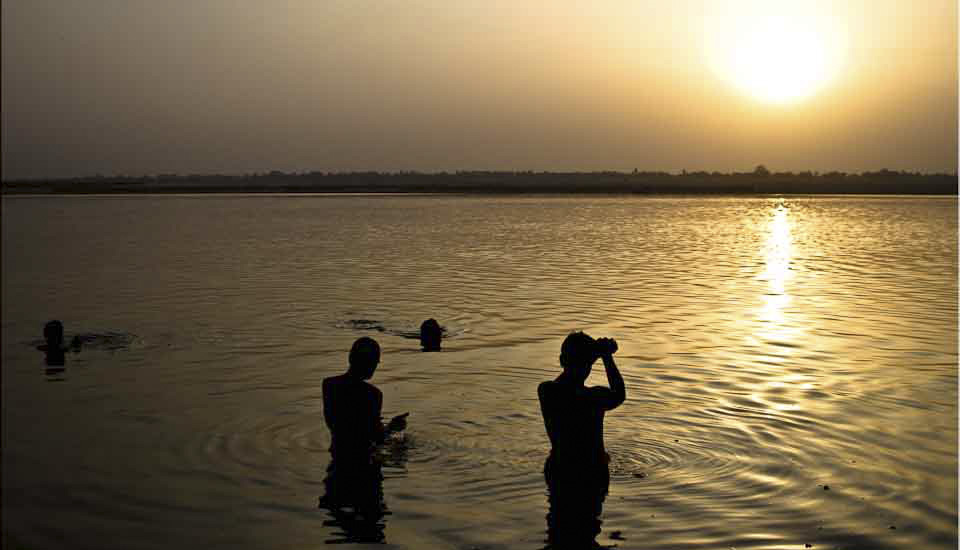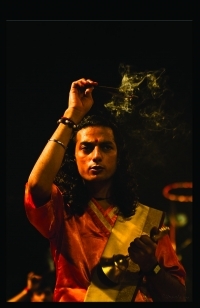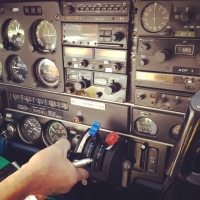.jpg)
A Well-Weathered Wooden Boat
Called shikara in Kashmir, spade shaped wooden paddle-boats – with or without canopies – are essential to life on Dal Lake in Srinagar, India.
The first day I was on Dal Lake – the centrepiece of Srinagar in the North Indian territory of Jammu and Kashmir (J&K), I felt like I was in a dream – or a Monet painting (see: Floating in a Dream).
The air is hot and thick. The stillness is punctuated by the plunk of boat oars in the water, the soft chattering of waterbirds in the floating vegetation, the distant talking of people on the wooden walkways or in their own boats, and the occasional rumble of a outboard motor.
The lake itself is nutrient-rich, so there is green all around: weeds and water plants float on the surface and tall willows and poplars line the edges and filter the blazing light of an afternoon sun.
I was being lulled into an otherworldly state as I lounged on the cushions inside a covered shikara enroute to a wood-carving workshop, operated by one family for generations: even the crafts in Srinagar are timeless.
The famous traditional shikara boats, used for fishing and transport, and the houseboats that originated in the 19th century so that Europeans – who weren’t permitted to buy land – had somewhere to live, are both generally carved from local cedar-wood. Cedrus deodara, deodar or Himalayan cedar, is a local tree that is remarkably durable and rot-resistant, with a fine, close grain, capable of taking a high polish.
Despite its durability, deodar is not a strong timber, and its brittle nature makes it unsuitable for delicate work where strength is required, such as chair-making. On the other hand, Juglans regia, the common walnut or Persian walnut is a species of walnut prized by fine woodworkers for its durability and lustre. J&K is the only place in India where you find walnut trees, making it the preferred timber for delicate carving and wooden furniture.
The Kashmiri traditions of walnut carving date back to at least the 15th century – variously attributed to Sheikh Hamza Makhdoom (c. 1494 – c. 1576), or Zayn al-Abidin the Great (1395 – 1470). Today, a decline in demand, thanks to competition from mass-produced products, and a reduced interest by young people in becoming skilled artisans (see: Artisans seek revival of dying walnut wood carving), is putting the centuries-old craft at risk.
Join me and a small group of photography enthusiasts in a classic deodar shikara, as we weave through the waterways in search of a walnut-carving workshop:
.jpg)
Man on a Walkway
With the strong Indian autumn light filtering through the willow trees at the water’s edge, and the plants on the surface of the water breaking up the reflections, I feel as if I’m wandering through a Monet painting.
.jpg)
Woman Walking Tall
I can’t help but admire the wonderfully regal way with which the local women carry themselves.

Busy Waterway
It is a busy afternoon, and there are other shikaras everywhere on the water.

Empty Shikara
The wonderfully decorated boats come in all colours.

Green Waterways and Tall Buildings

Indian Pond Heron – Ardeola Grayii
In a dark corner, a common paddy bird looks for its dinner.

Tall Buildings and Narrow Waterways
The waterways continue.

Reflections of Wood and Bricks
The buildings seem to be a mix of up-market dwellings and businesses and boarded-up empty premises.

Shadows on the Porch
It seems we have reached our destination!

The Wood Carver
The master craftsman welcomes us.

A Carved Door
We are given a rundown of the history of the business …

A Master Carver and his Table Top
… and shown some of the finished products.

In the Showroom
The work is detailed and intricate.

Choosing a Piece

Chiselling a Design
The time-consuming work on that unfinished door continues.

Chiselling Detail

Himalayan Buzzard – Buteo Refectus
Thanks to distance and low light, this is not a great shot; I include it because I am always impressed by how much wildlife there is everywhere in India.

The Woodcarver’s Mother
As is the practice across much of India, this family lives in a multi-generational household.

The Matriarch
In a living room completely panelled in walnut veneer, she posed for us near a window.

Man and Woman in a Boat
Back on the waterways, life goes on.

Young Man Watching
From the walkways across the water, people watch us pass.

Vegetable Sellers
The waterways are a hive of activity.

Trading Vegetables

Women on the Water
As evening falls, the light on waterways lowers, but activity continues.

A Quiet Corner

Another Paddy Bird
Usually solitary, Indian pond herons (Ardeola Grayii) are very common across the subcontinent.

Evening on Dal Lake
When we arrive back at our luxurious cedar houseboats, the sun is setting over the lake, and the world is quiet.
I wandered back to my room, still dreamy from the light on the waterways – but I could smell food, and I heard the call to dinner.

Truly, a wonderful first day on the incomparable Dal Lake of Kashmir.
Until next time,
Keep Smiling!
Pictures: 10September2023






























.jpg)

